
Grab a potato and take a close look—nope, there’s no label shouting “gluten-free.” But here’s the bottom line: plain potatoes don’t have gluten. Gluten is the stretchy stuff in wheat, barley, and rye that helps bread get fluffy. Potatoes, though? They’re all starch, no gluten.
That makes potatoes a safe pick for anyone who can’t have gluten—including people with celiac disease or those with gluten sensitivity. You can toss them into your diet with zero worries, as long as they’re fresh and unprocessed. But before you start swapping flour for mashed potatoes in your cakes, stick around—there’s more to know, especially when you look at potato-based products or mixed ingredients. Things can get a little sneaky, even in your own kitchen.
- What Exactly Is Gluten?
- Are Plain Potatoes Gluten-Free?
- Hidden Gluten in Potato Products
- Potatoes in Gluten-Free Baking
- Tips to Avoid Gluten Contamination
What Exactly Is Gluten?
If you’re wondering what gluten even is, you’re not alone. Basically, gluten is a protein found mostly in wheat, barley, and rye. It’s what gives bread its chewy texture and helps pizza dough stretch without breaking. Without gluten, baked goods can turn out dense or crumbly—which, yeah, can be a real letdown if you’re into fluffy cakes.
When people say they’re 'gluten-free,' it means they avoid foods with this protein. For folks with celiac disease, eating gluten isn’t just a stomach ache waiting to happen—it can actually damage their small intestines. Others might have gluten sensitivity and feel sick or tired if they eat it.
Here’s a quick rundown of common gluten sources:
- Wheat (bread, pasta, tortillas—basically, most stuff in the bakery aisle)
- Barley (used in beer and lots of cereals)
- Rye (think rye bread and some crackers)
You won’t find gluten in plain potatoes, rice, or corn, which is good news for anyone dodging gluten. But it hides in a lot of unexpected places—like soups, sauces, and even some candies, so double-checking labels is key.
If you’re baking and want to keep things gluten-free, you’ll need to watch your ingredients list closely. Swapping wheat flour for potato-based options is one way to get started, but more on that later.
Are Plain Potatoes Gluten-Free?
Let’s cut straight to it: plain potatoes, just as they come out of the ground, are naturally gluten-free. They’re in the nightshade family, not grains, so their makeup is totally different from foods that cause trouble for anyone with gluten intolerance or celiac disease.
The Celiac Disease Foundation puts it like this:
“All fresh vegetables, including potatoes, are completely gluten-free.”
This isn’t wishful thinking or marketing hype. It’s just plain biology. You can eat potatoes baked, boiled, mashed, or roasted without worrying about gluten sneaking in. Sweet potatoes and yams? Same story—they’re also naturally gluten-free.
Some folks worry that brown or red potatoes could be different. Good news: all regular potato varieties—russet, Yukon gold, red, or fingerlings—are safe from gluten by nature, no matter the color or shape.
If you see potatoes on a food label or ingredient list, and there’s nothing else added, you’re usually in the clear. Plain potatoes are about 80% water, 18% starch, and have barely any protein—not a trace of gluten.
| Potato Type | Contains Gluten? |
|---|---|
| Russet | No |
| Red | No |
| Yukon Gold | No |
| Sweet Potato | No |
Stick to whole, unprocessed potatoes and you’ll never have to second guess yourself. But once potatoes get mixed or processed, you’ll want to keep an eye out—sneaky ingredients can pop up fast (more on that soon).
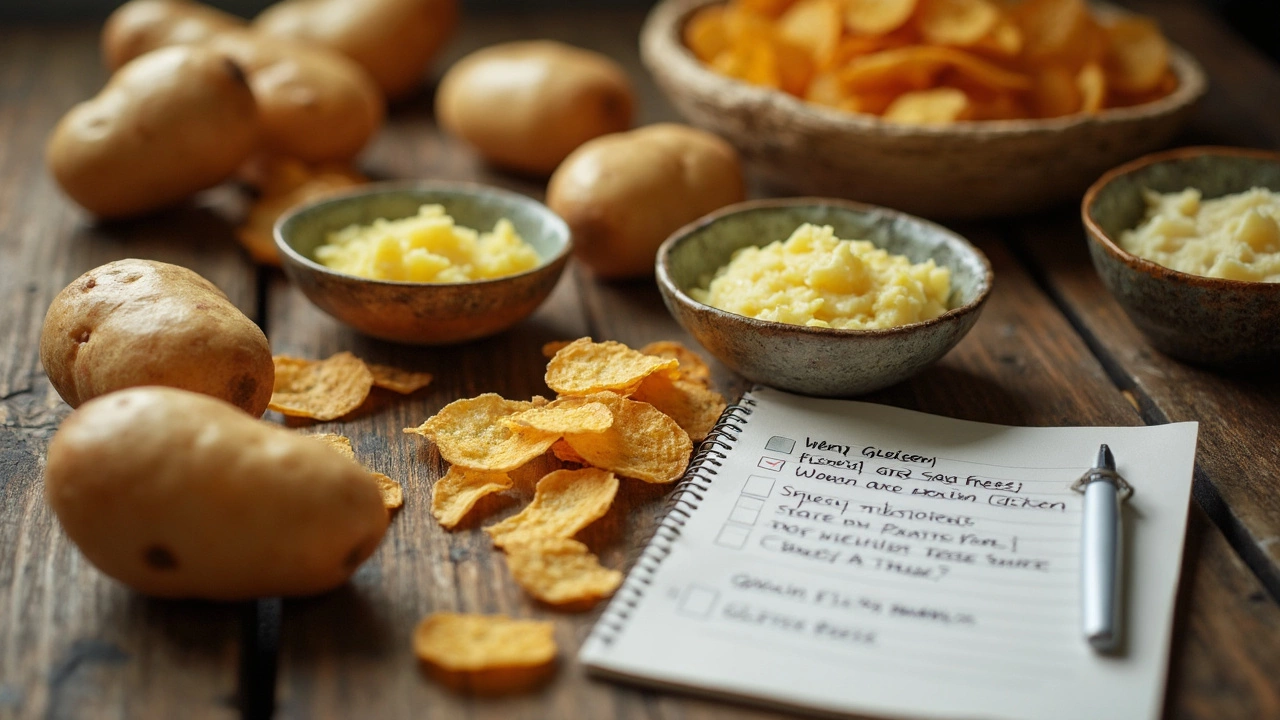
Hidden Gluten in Potato Products
You’d think grabbing a bag of potato chips or frozen fries would be the same as eating a plain old spud, right? Not so fast. Once potatoes get processed or cooked with extra stuff, gluten can sneak in from all kinds of places.
The real trouble starts in commercial kitchens and food plants. Think about frozen mashed potatoes, pre-seasoned fries, or even some potato soups. They might be super handy, but companies sometimes toss in wheat flour as a thickener or to crisp things up. Yup, it’s not just about the potato anymore.
"Just because something is made from potatoes doesn’t mean it’s gluten-free—always check for added starches or breading," says the Celiac Disease Foundation.
You’ll run into gluten more often in these potato products:
- French fries at restaurants: They may share a fryer with breaded foods or have a light wheat coating.
- Potato chips: Some brands dust them with flavors or seasonings containing wheat flour or barley malt.
- Instant mashed potatoes: Some boxed mixes add wheat-based thickeners—flip the box and look for “wheat” or “malt.”
- Frozen potato products: Hash browns, tots, and curly fries can carry wheat flour in the crispy coating.
- Pre-made potato casseroles or mixes: Breadcrumb toppings and sauces sometimes use wheat or barley as hidden binders.
Don’t just trust the front label. Turn the package around and scan the full ingredient list and allergy statement. Seriously, companies change recipes all the time. Even products that used to be gluten-free can suddenly start sneaking in wheat because it’s cheaper for them to produce in bulk.
| Product | Possible Gluten Ingredients |
|---|---|
| Frozen French fries | Wheat flour, cross-contact in shared fryers |
| Potato chips (seasoned) | Barley malt, wheat-based flavorings |
| Potato soup | Wheat thickener |
| Instant mashed potatoes | Modified food starch (from wheat) |
If you want to keep it safe, go for plain, whole potatoes and season them yourself. At home, you’ve got all the control. When you do grab a packaged product, hunt down that certified gluten-free label. It’s the fastest way to dodge wheat-laced surprises and stay on track.
Potatoes in Gluten-Free Baking
Potatoes can totally change up your gluten-free baking game. If you’re struggling with dry, crumbly cakes or dense muffins, potatoes might just be your secret weapon. They add moisture and softness that’s hard to get from typical gluten-free flours.
What works best? Potato flour and potato starch. Potato flour is made from whole potatoes, dried and ground up. It’s heavier and has a strong potato flavor—go easy on it in sweet bakes. Potato starch, on the other hand, is lighter, more neutral, and helps keep baked goods tender. A lot of people mix it with other gluten-free flours to get a texture closer to regular cake.
Here are some simple ways potatoes make baking easier:
- Gluten-free cakes use potato starch to make batters thick without turning them into bricks.
- Mashed potatoes can go right into your batter for crazy moisture—try it next time you make brownies or chocolate cakes.
- Potato flour helps bread stay fresh longer, so your gluten-free loaves won't dry out overnight.
Watch out for one thing: potato-based ingredients can make cakes a bit heavier if you add too much. Start with no more than 1/4 cup potato flour per recipe and mix it with rice or almond flour for best results.
If you’re curious about which gluten-free flours and starches actually work well in baking, here’s a quick comparison:
| Gluten-Free Flour/Starch | Texture | Best Use |
|---|---|---|
| Potato starch | Light, tender | Cakes, muffins, pancakes |
| Potato flour | Heavy, moist | Breads, rolls |
| Rice flour | Fine, slightly gritty | Cakes, cookies |
| Almond flour | Nutty, moist | Cakes, brownies |
Adding potatoes to gluten-free bakes is an easy upgrade—even just a spoonful of potato starch in your flour mix can help cakes rise and stay soft. Next time you’re baking, try swapping out a bit of your usual flour for potato starch and see how your cake turns out. It’s a little change that makes a big difference.
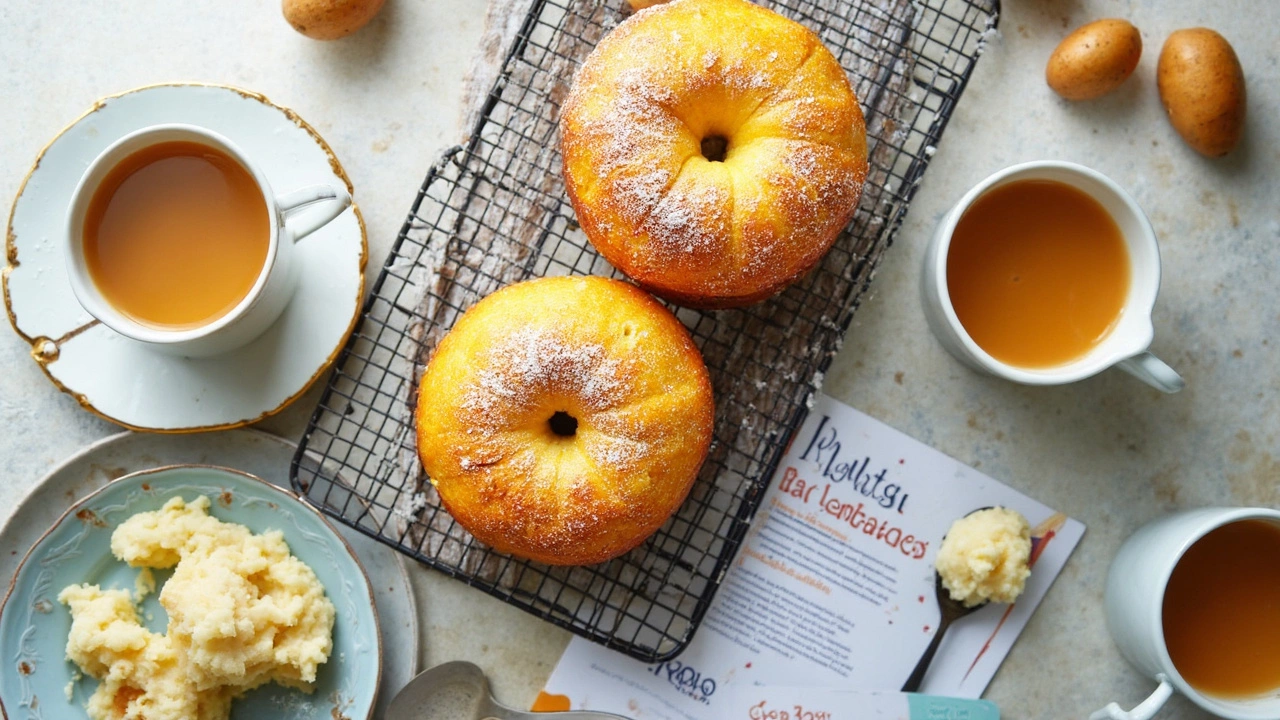
Tips to Avoid Gluten Contamination
It’s easy to assume potatoes are always safe, but cross-contamination messes things up for people who have to eat gluten-free. Kitchen slip-ups can happen if you're not careful about what touches your potatoes before you eat or bake with them.
Start with these simple strategies to keep gluten at bay:
- Watch your surfaces: Clean counters, cutting boards, and knives before you cut or mash potatoes. Even a crumb from regular bread can make a difference if you’re really sensitive.
- Separate tools: If you use a toaster, fryer, or even a baking pan that’s cooked something with gluten before, it’s risky. Use dedicated tools for gluten-free cooking, or wash them thoroughly.
- Be careful with packaged potatoes: Pre-made mashed potatoes, frozen fries, or anything seasoned can sometimes have added wheat flour for texture or to stop clumping. Always read the ingredient list. An easy trick: products labeled "gluten-free" follow stricter rules and are usually safe.
- Watch out at restaurants: Fries might start off gluten-free, but if that oil also fries chicken nuggets, forget it—the oil is now a gluten carrier. Don’t hesitate to ask about cross-contamination and how they prep potato dishes.
- Don’t mix with gluten-baking: Lots of home bakers use flour everywhere. Clean up flour dust, and wash your hands and aprons before you work with potatoes or gluten-free cakes.
If you want to see just how easily gluten can hide, check out this table showing contamination from basic kitchen mistakes:
| Action | Potential for Gluten Contamination |
|---|---|
| Using same colander for pasta & potatoes | High |
| Frying gluten-free fries in shared oil | Very high |
| Kneading dough on shared counter | Medium to high |
| Opening packaged, unseasoned potatoes | Low |
Sticking to these habits will save a lot of headaches, especially if you cook for someone with celiac or a serious gluten allergy. Every bit of extra attention pays off when you want real gluten-free results—whether you’re whipping up fries or baking cakes.



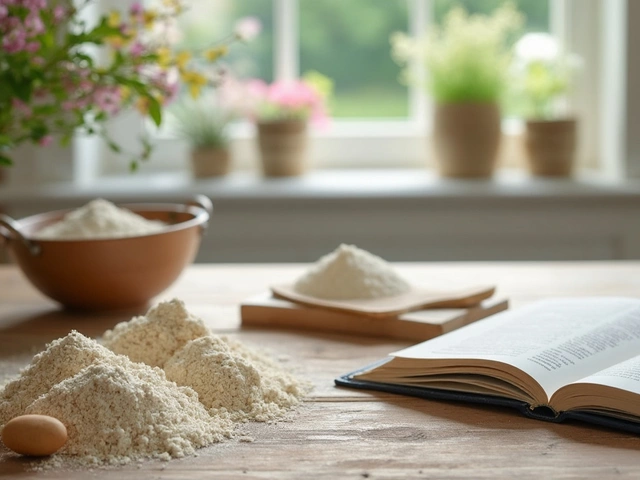
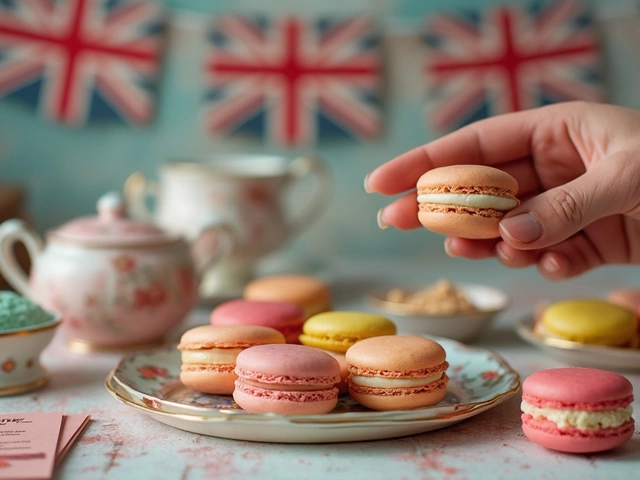


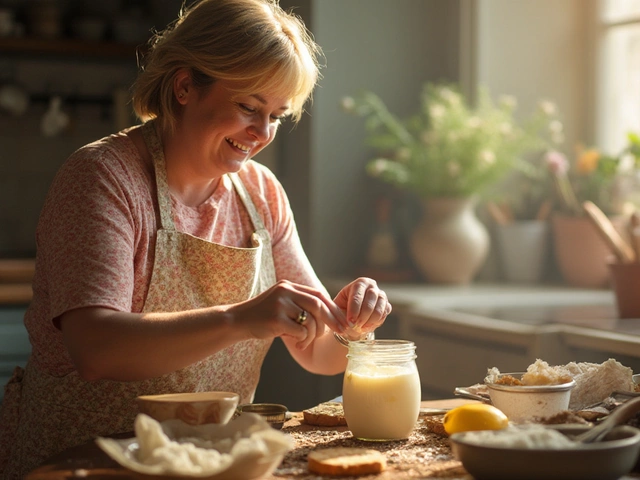

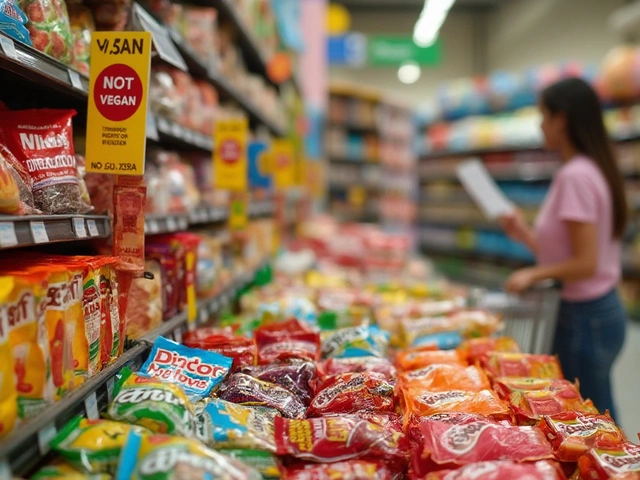

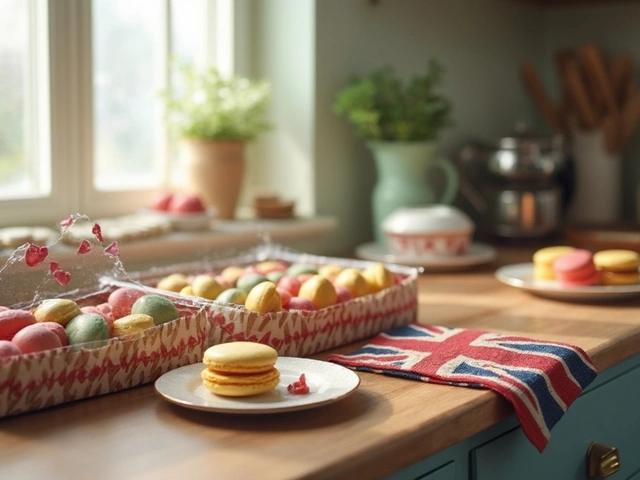
Write a comment